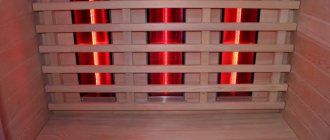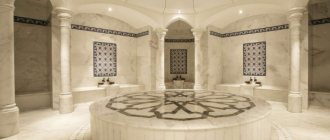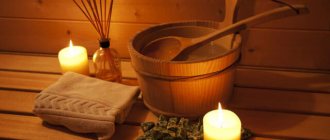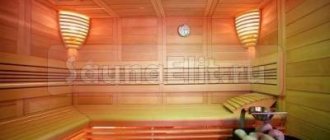Among the most popular and visited places by the Romans were the monumental public buildings for sanitary purposes. Roman baths were intended not only for performing water procedures, but were also the main tool for socialization. The Romans often visited the baths in order to socialize, make new acquaintances, play sports, resolve any issues and simply have fun in a pleasant atmosphere.
- Bath architecture
- Bath structure
- Thermal practices
- Games
- Cleansing
- Hydrotherapy and relaxation
- Visitors to the baths
From the second century BC, the ancient baths of Rome became increasingly important in the lives of citizens and constituted one of the main meeting places during the Empire. Such success of public baths was due to the fact that absolutely all segments of the population had access to them. In addition, visiting the baths in ancient times was completely free.
The most valuable example of the architecture of Roman baths, preserved in Rome in relatively good condition, is the thermal complex built by Emperor Caracalla in the second decade of the 3rd century, as well as the grandiose baths of Diocletian, built at the beginning of the 4th century. Both thermal complexes are striking in their size: the first occupied an area of about 11 hectares, the second - about 16! On the territory there were bathing halls, where there were baths with water of different temperatures, sports grounds and rooms for various purposes: for massage treatments, for playing ball, wrestling, library buildings and even pagan sanctuaries. Roman baths were like entire cities, where everyone could find something to their liking.
More about Roman Baths
Roman baths today are associated with luxury and an elite way of spending time. However, their story did not begin so magnificently. The prerequisite for the creation of a public bath was the terrible unsanitary conditions of commoners during the change of eras.
The commander Agrippa was the first to order the construction of a bathhouse, and then the baths were absolutely free and were intended mainly for the common people.
However, very soon the baths turned into something more than just ablution rooms.
They began to build in the baths:
- sports halls;
- libraries;
- massage rooms;
- theater halls;
- canteens, or rather ancient analogues of modern restaurants.
Thanks to such a variety of leisure activities, Roman citizens simply stayed in the baths for the whole day; no one was bored.
Interesting fact! Despite the fact that baths soon began to be built for the elite of Rome, and these buildings were much more luxurious, the basic internal structure of the premises was the same.
What is inside?
The Roman bath consisted of several rooms with different conditions:
- To begin with, visitors found themselves in a locker room called apodytherium. This room was cool, the temperature did not even reach 30°C. Clothes were supposed to be left here.
- Next we had to visit the washroom called the tepidarium. It was already much warmer here, up to 40°C, and the humidity also reached 40%.
- The next room to visit was the callidarium. It was already a kind of steam room with a temperature of up to 70°C. In addition, there was high humidity inside. Its value could reach 100%. There was also supposed to be a pool inside with water from a thermal spring.
- Another steam room is Laconium. This room was dry and with a high temperature, up to 85°C. Very similar to a Finnish sauna.
- After such intense steaming and warming up, it was necessary to visit the cool frigidarium room. It housed 2 swimming pools with warm and cold water for useful contrast treatments.
- And finally, the lavarium awaited visitors. This is a special room for cosmetic procedures. Here the Romans were massaged, rubbed with aromatic oils, covered in clay, etc.
On a note! It was thanks to the presence of a thermal spring inside that the Roman bath received the name “therms”. Hot water from natural springs was used to warm up rooms, fill swimming pools, and use it for ablutions.
Peculiarities
As you can see, the main feature of the Roman bath in ancient times was the thermal spring.
The system worked smoothly:
- Natural water, already heated to 40°C, was supplied to the bathhouse through a system of pipes located under the building and behind the walls. Thanks to this, the room itself warmed up.
- In the basement there was a large boiler where water boiled all the time, forming hot steam. It left the room through holes in the walls and entered those areas of the bathhouse that were intended for steaming.
- The floor above the boiler must be made double so that it does not burn.
The pinnacle of engineering made the Roman bath very comfortable for a long visit.
Due to the fact that the temperature in the rooms varied, the visitor, moving from a cooler room to a warm one, and then to the steam room, did not experience any stress on his body. Without a contrasting temperature difference, a person avoided dehydration and, as a result, did not experience dry mouth, headaches or other unpleasant consequences.
A little about the decoration
Of course, elite baths are a separate world. But even in the public baths there were enough signs of luxury. The pools and sunbeds were made exclusively of marble. The walls and floors were decorated with mosaics and frescoes. Even washstands and showers contained elements of luxury, such as being framed with precious metals and stones.
And even despite such luxury, the entrance fee for visiting the bathhouse was very reasonable. The poor could easily afford such pleasure.
2Roman Baths of Titus
Baths of Titus
These baths were also built in the 1st century AD, on the territory previously occupied by the palace of Nero and subsequently destroyed by fire. By the way, they are located 100 meters from the Colosseum.
The building of Emperor Titus has not been preserved in the form that was originally intended for it, but even looking at the ruins of this structure, it is not difficult to notice its scale. The territory of the complex, as expected, had many additional premises. There was also a reading room and a theater here. The façade of the building faced the Colosseum.
The remains of the Baths of Rome are located a few steps from the Colosseum metro stop. It's on the street of the same name.
Modern Roman bath
And today, many contemporaries do not give up attempts to build a high-quality Roman bath. Of course, such structures cannot be compared with the original. Some features, such as the thermal spring under the building, cannot be recreated. In addition, it is too expensive, since the original Roman baths were built exclusively from natural materials.
Expert opinion
Lovkachev Boris Petrovich
Bath master who knows everything about steaming
Replacing expensive resources with artificial ones leads to an inevitable violation of heat-saving technology and changes the whole idea completely. In addition, in the modern Roman bath there are no longer any premises for leisure activities. Nobody plans to place entire complexes with libraries, gyms, theaters and restaurants inside.
Therefore, in modern society, what is passed off as a Roman bath is, of course, just its approximate analogue. But it retained its main functions as a steam room, as well as several main rooms. The rooms also maintain different humidity levels and temperature conditions. Of course, modern technologies are already used for this.
As for the design, they usually try to design such steam rooms in the Roman style. Inside you can see the usual arches and columns. The walls are laid out with natural stone or tiles artificially made to look like it. Granite can also be used instead of marble. Sun loungers are usually already made from modern materials.
On a note! Modern Roman baths, even with the use of artificial materials, are very expensive to build. For this reason, there are very few of them and most often they are part of large hotels or spa centers.
Features of using baths
Roman baths in Ancient Rome were built near thermal waters, which filled artificial pools for ablution procedures. This made it possible to save money on additional water heating and timely replacement of fluid in pools.
Subsequently, the Roman baths were supplemented with new functional premises for higher quality leisure time: gyms, library rooms, rooms for massage and relaxation, rooms for theatrical performances, oratory performances and eating.
The main goal of such a transformation is to provide a wide range of entertainment and maximum comfort for vacationers throughout the day.
The grandiose building in Rome, which was the center of people's social life, is the reason why the Romans needed a daily visit to the baths. Entertainment that was available to almost everyone in Rome, with the exception of prisoners and slaves.
How to steam properly
To get the maximum effect from visiting the bathhouse, just follow a few simple tips.
Exercises
Before entering the bathhouse, it is definitely recommended to do at least a light warm-up and warm up your body. It will be enough to do stretching exercises and a few simple standard exercises for all muscle groups.
This advice is very interesting because it is a reflection of ancient traditions.
At that time, ancient doctors always prescribed sports before the water procedures themselves. For this purpose, there were separate rooms in the thermal baths. Moreover, they studied completely different disciplines. One of the most beloved sports among the Romans was wrestling. And in order to cause inconvenience to the enemy, athletes rubbed themselves with oils.
For those less resilient there were many ball games. The balls also differed in filling. Fist fights and lifting weights were also popular. But women preferred physical exercises that included running.
Minimum soap
It is not recommended to use soap and shower gels in the bath itself. Maximum - before the start of the procedures during ablution, or after all the premises have been passed through. But the use of oils is welcome. Opened and steamed pores happily take away all the valuable substances contained in the oil.
Moreover, many bath attendants even advise rubbing their hair in a Roman bath so that it does not dry out in such a hot bath climate.
No to washcloths
The Romans did not use washcloths at all. Strigel cleansing was popular at that time. It was a small metal scraper that was used to remove dirt and sweat from the epidermis. Today, it is recommended to replace all artificial washcloths with brushes made from natural fibers.
Such accessories will perfectly cleanse the skin and additionally provide an excellent massage effect.
Everything is good in moderation
It is not recommended to make more than 3 visits to the Roman bath. In this case, it is advisable to take short breaks between them, but no more than half an hour.
Spending 15 minutes in the steam room is enough; exceeding this threshold is not recommended. While visiting the last room, you should definitely try massages, masks and other beauty treatments. You should also drink plenty of fluids. Natural herbal tea will perfectly quench your thirst and replenish lost moisture.
The benefits and harms of visiting the thermal baths
The benefits and harms of the Roman bath are a question that has been carefully studied for a long time. The beneficial properties of regularly visiting the thermal baths in compliance with the basic rules and the sequence of transition from one room to another are as follows:
- The skin tone increases, it becomes soft and silky;
- After the first visit to the bathhouse, swelling will begin to subside from the body;
- Improving the activity of the cardiovascular system (subject to the established soaring time);
- A feeling of lightness and freshness appears.
As for the harm from visiting a Roman bath, there is no harm. The exception is situations when the duration of stay in the callidarium and laconium is not observed.
Benefit
There is an opinion that the Roman bath, due to its gentle conditions, is most suitable for women who cannot withstand the high temperature conditions of other baths. Of course, soft steam has an excellent effect, opening and cleansing pores and improving blood circulation. But the advantages of the Roman bath can be felt by everyone who visits it.
It brings undeniable benefits:
The cardiovascular system is strengthened. This is a great way to prevent heart disease.
Mental state improves, depression goes away and sleep normalizes.
The skin is cleansed, impurities and toxins are removed, regeneration improves.
The functioning of the respiratory system improves.
Overloaded muscles relax.
Fatigue is relieved.
Immunity is strengthened.
But it should be remembered that the Roman bath is contraindicated:
- pregnant women;
- those suffering from colds or viral diseases, especially in the acute stage;
- in the presence of epilepsy;
- cancer patients;
- in the presence of inflammation, especially in the acute stage, if a chronic disease is in remission, you should consult a doctor;
- in the presence of cardiovascular diseases.
Preparation for construction
When building a hammam with your own hands, you will need to thoroughly study all the stages and features of construction, draw up a project and drawings, stock up on building materials and patience, but also purchase tools, building materials and equipment.
To make it easier for you to build your hammam, view our sample designs that will help save you time and money during the design phase.
Video of typical hammam projects:
Also, you can get acquainted with the features of non-standard solutions and the construction of hammams in different types of premises:
- Construction of a hammam in an apartment
- Royal hammam in the bathroom
- How to build a Turkish bath in a country house or a wooden house?
- Hammam in the cottage. How to build a Turkish bath in your home?
- How to build a hammam in a townhouse?
- Turkish bath with swimming pool
- Joint construction of hammam and Finnish sauna
- Combined hammam with Russian bath
IMPORTANT! The number of sunbeds and seats, the presence of a massage table and the choice of a steam generator of the required power depend on the area of the hammam room.
- Walls (panels)
- Sunbeds
- Doors (glass)
- Dome
- Cranes
- Qurna (bowl for ablution)
- Nozzle
- Mosaic
- Backlight
- Fiber Optic Lighting
- Lamps
- Ventilation
- Control system
- Steam generator (Hygromatik)
- Dosing stations
Tools
It will not be possible to build a Turkish bath without:
- construction mixer and container for mixing concrete;
- shovel;
- drills with drill bits;
- trowels;
- screwdriver;
- hydraulic level;
- hammer;
- rubber mallet;
- trowels for plaster.
Construction Materials
Once the area and layout of the future hammam has been determined, the need for the amount of building materials can be calculated.
To build a Turkish bath in a private house, you will need the following set of materials:
- Brick. It will be needed to lay out the base of sun loungers or benches.
- Material for the construction of walls and ceilings. It must be resistant to corrosion and moisture. You can use glass-magnesite slabs or sheets of cement and shavings.
- Mortar of cement and sand.
- Finishing materials for floors, walls, sun loungers and ceilings.
- Door made of heat-resistant tempered glass, fully equipped.
- Pipes for a steam generator. Through them, steam will flow from the steam generator into the hammam room.
- Heat-resistant sewer and water pipes.
- Waterproofing materials and mortar for walls and floors.
- Fasteners in the form of self-tapping screws and dowels.
Equipment
A hammam is not just a warm room with running water and a drainage system. There is a certain list of mandatory equipment, without the installation of which the normal and safe functioning of the steam room is simply impossible.
We will help you choose equipment for your hammam:
For proper operation of the Turkish bath you will need to install:
- steam generator;
- system for heating floors, walls and sunbeds;
- bowl for ablution - kurna;
- ventilation system;
- taps for hamam;
- special lamps.
Approximate estimate of the minimum required equipment for a standard mini hammam:
| Name | Quantity, pcs. | Unit price, rub. | Sum |
| Steam generator | 1 | about 40,000 | 40000 |
| Drain valve | 1 | from 10000 | 10000 |
| Qurna | 1 | from 15000 | 15000 |
| Sun lounger | 2 | from 12000 | 24000 |
| Drain ladder | 1 | from 1500 | 1500 |
| Glass door Tylo | 1 | from 20000 | 20000 |
| Taps and shower | 2 | from 3000 | 6000 |
| Lamps | 3 | from 1500 | 4500 |
| Remote Control | 1 (if not included in the steam generator package) | from 15000 | 15000 |
You can do without other devices, such as a watering can with a “tropical shower”, an air aromatization system, and an acoustic system. They are optional and are optional. Also, you will have to separately calculate the plumbing, electrical and ventilation parts.
Often asked
What oil should I use, essential or regular?
Essential oils are suitable for aromatherapy; for hygiene procedures it is better to use oils based on polyunsaturated vegetable fats.
Which bath is healthier, Turkish or Roman?
These baths practically do not differ in temperature conditions and have the same positive effect when visited correctly.
Is it true that the Roman bath is the most gentle and suitable for anyone?
The Roman bath has very comfortable temperature conditions, but there is also a room with very hot and dry steam. If you are intolerant to heat, it is better to simply not visit it and go straight to the pool.
What should you take with you to the bathhouse?
The set is standard, a towel for the sun lounger, they are quite hot, slippers and a cap or towel for the head. But since Roman baths are usually part of exclusively elite complexes, all the necessary equipment is provided on the spot.
How long does it take for 3 visits to a Roman bath?
If everything is done according to the rules, then one session should not last more than 2-3 hours, taking into account rest between sessions and cosmetic procedures.
3The Baths of Trajan
Accordingly, here we are talking about the construction under the emperor of Rome Trajan, the baths are dated to the 2nd century AD. They are located near the previously considered terms - the terms of Titus. They occupied the same part of the field that belonged to the burnt palace of Nero in Rome.
At this time this is not a functioning complex. During excavations, it was found that the total area of these baths in Rome was about 100,000 square meters. Moreover, under the complex there were also underground tunnels intended for the service personnel of the thermal baths.
Via delle Terme di Traiano is the name of the street in Rome where you can see the Baths of Trajan.
Do-it-yourself hammam from start to finish
Building it with a lout is not an easy task. Construction must be phased. The process itself is quite labor-intensive and requires large material costs. It is not recommended to save on the construction of a Turkish bath, but it is quite possible to reduce costs. To do this, you should not make the hammam a separate building. It is best to allocate one of the existing rooms for it that meets the necessary requirements. Traditional and expensive finishing materials can be replaced with cheaper modern ones. But the most important thing is to take into account all the requirements for the construction of a hammam, determine the need for additional devices (music, air aromatization, etc.), calculate the possible number of benches or sun loungers and choose the right one:
- room for a Turkish bath;
- materials for thermal and waterproofing;
- building materials for finishing work;
- lighting;
- method of heating walls and sunbeds;
- equipment room;
- steam generator.
Selecting a room
When choosing a room for a Turkish bath, it is important to know that the ceiling height cannot be less than 2.7 meters , and the area must be such that at least one sun lounger can be easily placed. The minimum standard size for a place to lie in a hammam is 60 cm and 200 cm . In addition, you need to take into account how many people will be in the hammam at the same time. This directly determines how many places to lie down will need to be made, and, accordingly, the area of the bathhouse.
Materials for thermal and waterproofing
The best option for preserving heat and waterproofing in a hammam is considered to be panels made of foamed polystyrene from two German and one Russian manufacturers:
- Lux Elements (Germany)
- Wedi (Germany)
- A-panel (Russia)
3D visualization of the insulation of a hammam with Lux Elements panels.
The panels are reinforced with fiberglass mesh. They are durable, lightweight, resistant to fire, and can withstand high temperatures. You can even form the ceiling of a hammam from them, since manufacturers took care of producing dome-shaped panels. In terms of quality characteristics, polystyrene panels are significantly superior to plasterboard and plaster. You can safely attach any finishing materials to them, including heavy ones.
Materials for interior finishing
One of the most important stages of construction. For the interior decoration of a Turkish bath, you can use almost any moisture-resistant materials that can withstand high temperatures. It all depends on taste and financial capabilities.
As a rule, at the stage of interior decoration, a hammam is used:
Marble. Traditional material for finishing hamam. Its only drawback is its high cost.











